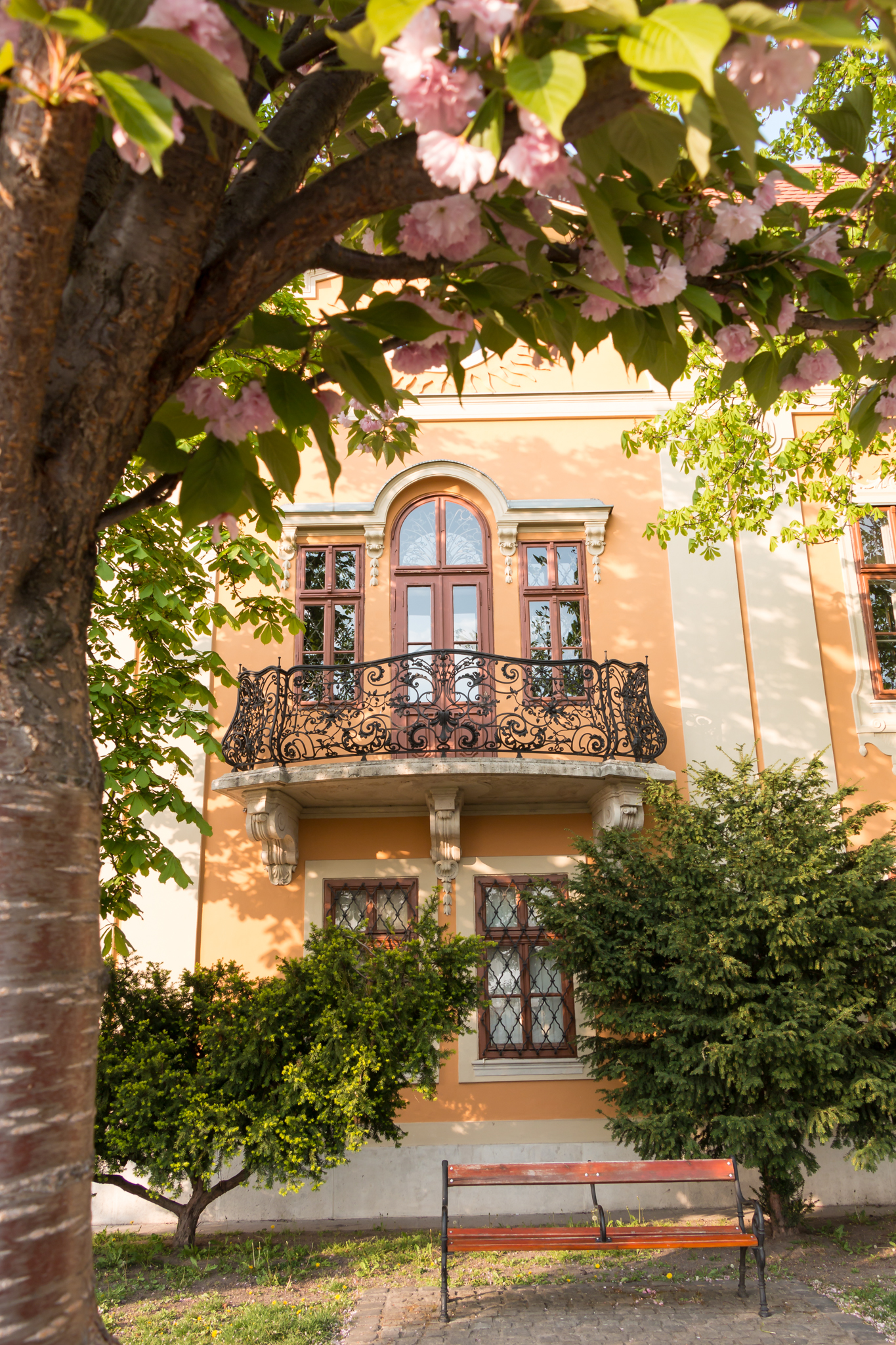Budapest & Szentendre, Hungary
Budapest is one of those cities that people almost never disparage. In fact, most people that have visited Budapest have only good things to say and it regularly appears on “favorite European cities” lists. And what’s not to like? It’s cheap, has surprisingly good food, is dynamic, cosmopolitan, energetic, has beautiful architecture, is full of interesting history, and just has such a variety of things to see and do. The city has two contrasting sides: hilly, leafy, cobblestoned Buda and modern, urban, hip Pest. We stayed (here) in Buda for our four-day visit and we’ll begin our post covering this half of the city.
Buda
What better way to welcome yourself to Budapest than a view out over the city from Fisherman’s Bastion, a 19th-century faux fortress topping one of Buda’s hills? This spot offers great views 24 hours a day, but it’s especially picturesque at sunrise and sunset when the golden glow of the sun warms the sight of Parliament across the river. Fisherman’s Bastion shares real estate with Matthias Church, a 14th-century Catholic church whose exterior beauty (check out the roof tiles) is surpassed only by its interior beauty (stunning floor-to-ceiling patterns). It’s well worth the price of admission.
The cobblestoned streets behind Matthias Church are worth a wander (or two) for their colorful buildings and undeniable charm—this is the oldest part of the city. Be sure to check out Magma, a shop carrying handmade Hungarian souvenirs and artwork.
Buda Castle, from where Hungary was ruled for hundreds of years, dominates the southeastern portion of the hill. The castle these days is home to Budapest’s History Museum and Hungary’s National Library; we didn’t visit either, but we did spend a lot of time around the castle appreciating both its exterior and the great views. We stumbled on Tóth Árpád sétány, a pedestrian walkway and park that runs along the western edge of the hill, on our first evening wandering around this area. It was especially beautiful this time of year as spring flowers were blooming on the ground and in the trees. We had fun picking out which houses along this promenade we’d like to live in! We finished off our first day with a one-hour nighttime river cruise along the Danube. Budapest really knows how to showcase itself in the evening—everything from buildings and bridges is vividly but tastefully flooded with an orange-yellow glow.
South of Castle Hill lies Gellért Hill, topped by the stone fortress Citadella and majestic Liberty Statue. We climbed up from Liberty Bridge, stopping several times to catch our breath (it’s deceptively steep!) and check the views. After summiting, we hiked down to the Szent Gellért Monument which provides a striking straight-on view of Elisabeth Bridge. Back north on Castle Hill, we made our way to the Hospital in the Rock, which you would easily miss if you weren’t looking for it. The entrance, located on a small street at the base of the hill wall directly below the Tóth Árpád sétány promenade, hides behind it a huge complex of rooms and hallways extending through the rock of the hill. The museum here offers one-tour guided tours of the complex, which was originally used as a secret hospital during the Second World War and then as a nuclear bunker during the Cold War. It was one of the most unique museum experiences we’ve ever had and we really appreciated the message throughout: war is always a tragedy.
We were surprised by how good Hungarian food is. Buda is host to many good restaurants, ranging from budget bistros to top-tier eateries. One of our favorite dinners was from Café Pierrot (grilled goat cheese and beet salad, goulash soup, cottage cheese ravioli with bacon, raspberry cake), a higher-end restaurant housed in a 13th-century bakery with a beautiful grassy courtyard. We drool over that raspberry cake on a nightly basis! Pierrot’s sister restaurant Pest-Buda, which has a lighter vibe, played host for another dinner (goulash soup, pasta with cottage cheese and bacon, apple strudel, and Hungarian nut cake). No visit to Budapest is complete without some serious café hopping, and Ruszwurm Cukrászda is one of the classics; we actually finished off our four-day weekend with a visit (lime cake and cream cake) which made the bitter pill of leaving the city a bit easier to swallow.
Stay tuned for adventures in Pest and a half-day trip up the Danube to charming Szentendre!
Pest
Our Airbnb in Buda was only a 10-minute walk to Budapest’s renowned Chain Bridge; we got lots of use out of the bridge as we crisscrossed from Buda to Pest and back all weekend. St. Stephen's Basilica, a commanding Catholic church completed just 112 years ago, is just over the bridge on the Pest side. Check out the 360-degree views from the top of the tower and be sure to walk around to the beautifully curved back of the church.
The Hungarian State Opera House is not far from here and while we didn’t go inside (they offer guided tours in addition to, as you’d expect, regular concerts), we appreciated the architecture from the outside. The House of Terror is a bit further down Andrássy út. The museum chronicles the impact of the Nazi and Soviet occupations, and while the content is quite interesting, we felt that the layout of the space was far from optimal.
You’ll find Heroes Square and City Park at the northeast extreme of Andrássy út. The square is crowned by the Millennium Memorial, constructed in 1896 to celebrate the 1000th anniversary of the founding of the Hungarian state, and flanked by a contemporary art museum and a neoclassical fine arts museum. The park is a pleasure to stroll and is home to Vajdahunyad Castle, a faux castle also built in 1896.
Széchenyi Thermal Bath is the star of the show in this area of the city. Lurking below the ground of Budapest and across Hungary is one of the largest systems of thermal springs in the world. Hungarians have taken advantage of this for hundreds of years and today there are dozens of thermal baths across the city. Széchenyi is one of the most famous and also one of the most accessible to tourists. The whole procedure around visiting baths can be intimidating and confusing, but Széchenyi’s website covers everything you’d want to know in an FAQ and even offers online booking! It was a bit chilly outside the morning we visited, but the outdoor baths were hovering around 90°F and there were even warmer baths indoors for those seeking to turn up the heat. Rejuvenating in one of the city’s many thermal baths is without a doubt a must-do!
The southeastern corner of central Pest is home to the Palace District, an area where many wealthy families built grand residences during a period of rapid development in the latter half of the 19th century. It’s a small area worth a wander and we stumbled on some real gems, for example the leafy courtyard of Almássy Palace tucked away on Ötpacsirta Street.
This area overlaps with Budapest’s Jewish district and the striking 19th century Dohány Street Synagogue, Europe’s largest synagogue, is only a few steps away. Our visit coincided with Passover which injected a bit more meaning into our time there, but you can appreciate the immense beauty of the interior any time of the year.
Nearby Kazinczy Street is the center of the Jewish district and is also home to some of Budapest’s most popular ruin pubs. What is a ruin pub you ask? The idea is: take an abandoned building, clean it up but keep it dirty enough to retain its beaten charm, install a bar, fill it with quirky furniture and artwork, and let the crowds pour in! This isn’t really our scene, but we did walk through Szimpla Kert during the day and could appreciate how cool and unique of a space it is. Back in the core of Pest we found our souvenir from Folkart Kezmuveshaz, a handmade embroidered pillowcase (and check out the larger Magma—noted in our last post—location while you’re in the area).
Our luck with delicious food continued in Pest. We shared loaded lángos (think fried dough pizza) from one of the upstairs stalls at Great Market Hall. More lángos was had from Karavan Street Food Market on Kazinczy Street, but this time we finished it up with chimney cake (spit-cooked flaky sugar- and cinnamon-covered dough). One of the many remnants of Budapest’s time as part of the Austro-Hungarian Empire is the city’s thriving cafe culture. We grabbed lunch one day from Két Szerecsen by the Opera House (lamb in yoghurt sauce, fried goat cheese, spinach cream with ham, aubergine spread, fresh juice and lemonade). And strawberry kiwi and blood orange tea flowed at unique Sirius Teaház—you can enjoy your tea on the padded floor of the main room (take your shoes off!), or venture up into a hangout by the ceiling, or even crawl through a mirror-covered hallway to get to another cozy hangout. This place is a must-visit!
We have so many good things to say about Budapest itself, but one of our favorite parts of the weekend was our half-day trip to charming Szentendre which we’ll cover next!
Szentendre
Our choice for a small town break from Budapest was charming Szentendre, or St. Andrew. The town is an easy 40-minute train ride along the Danube from Budapest’s central Batthyány tér metro station. The portion of the journey within the administrative bounds of Budapest was covered by our tourist transit pass and we only had to pay a small additional supplement fee to finish the journey on the commuter section of the line.
We wandered the residential streets around Kör utca on our walk from the train station to the center of town. This quiet, cobblestoned area, though small, was a nice surprise and we had the area to ourselves.
We snuck down an alley to Fő tér, the main square, which was much more alive. The square was graced with a lampshade art installation during our visit which added a quirky element to the charm. Blagovestenska Church, a remnant of Szentendre’s multicultural past, is worth a visit, though the entry fee seems silly for such a small sight. The orthodox church was built in the 18th century at a time when Serbs dominated the area. Many Serbs emigrated from Serbia to escape from the Ottoman Empire; Austria-Hungary was happy to receive these immigrants and Szentendre was a popular destination for them. The town at different times has also seen mass immigration from Croatia and Germany.
After enjoying a stroll along the riverfront we walked back toward the center and up to the small hill that’s crowned by Saint János Church. Szentendre has a strong history in the arts and that is evidenced today by the many museums and galleries scattered throughout the town. We visited the Béla Czóbel Museum which showcases the work of the eponymous 20th-century Hungarian painter, who was responsible for introducing the country to Post-Impressionism styles through his association with frontier artist groups in France, the Netherlands, and Germany. Though not a worldwide household name, Czóbel is a top tier Hungarian painter and it’s always interesting to learn more about the artistic heroes of a country and its people.
We ended our visit with a stroll down Bogdányi Way and some delicious gelato from Levendula Kézműves Fagylaltozó. We only spent a half-day in Szentendre, but we fell in love with its charm and artistic flair and it offered a nice break from the high energy of Budapest.













































